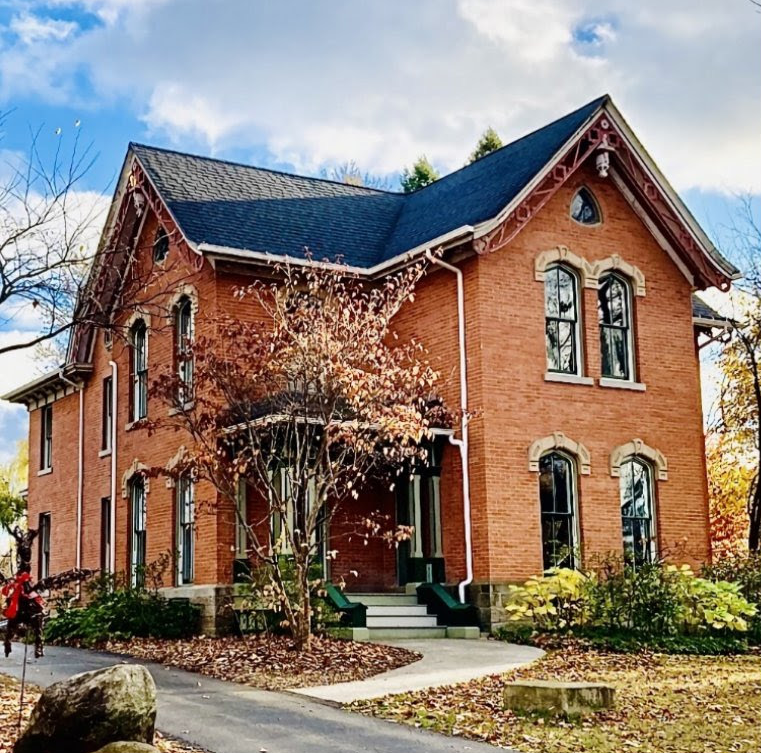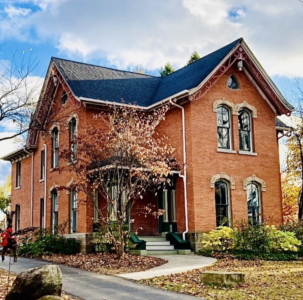Historic Daisy Farm celebrates 150 years with open house Sunday

An open house will be held Sunday from 1 to 5 p.m. at 3531 E. Main St. on Route 20 in Sheridan.
A beloved piece of local history is turning 150, and the community is invited to celebrate. On Sunday, Daisy Farm will host an open house from 1 to 5 p.m. at its beautifully restored 1875 Victorian Gothic cottage, located at 3521 E. Main St., Fredonia (Route 20 in Sheridan).
This free, family-friendly event will feature live music by The McClenathan Brothers, pianist Kay Barlow, and the Grange #1 Allstars string band. Guests can enjoy Victorian-era lawn games, wine and beer tastings from 21 Brix Winery and Monster Beach Brewery & Tiki Bar, and a decadent dessert banquet prepared by local bakers. A basket raffle, with prizes donated by area businesses, will benefit the Darwin R. Barker Historical Museum.
Visitors are encouraged to come as they are-or in Victorian-era costume for added flair.
A Local Architectural Gem
Known today as Daisy Farm, the house was originally called the Sloan House and is one of the few remaining homes designed by celebrated Fredonia-based architect Enoch Curtis. A self-taught architect and Civil War veteran, Curtis left an indelible mark on the region with designs like the Fredonia Opera House, the Cemetery Gatehouse, and many distinguished Victorian homes.
Built in 1875, the Daisy Farm house is a classic example of the Victorian Gothic Cottage style, featuring steep gabled roofs, intricate wooden bargeboard trim, gothic-arched windows, and a distinctive porthole window design unlike any currently known local examples. The Daisy Farm is one of the few structures designed by Curtis whose floor plans still exist, and the originals have been enlarged for display at the open house.
Historic estimates suggest the home’s original construction cost was around $7,700, with a 3.5% commission for the architect at $269-roughly $195,000 and $6,800 today.
More Than Just Style: Architecture and Virtue
The Gothic Revival style wasn’t just about aesthetics. In the 19th century, architecture was believed to shape the character of its residents. A thoughtfully designed home was seen as a reflection-and a promoter-of moral values, especially for the American farming family. Materials and layout were chosen to encourage simplicity, honesty, and family unity-such as prominently placed dining rooms meant to draw families together, and to dissuade farmers from simply eating in the kitchen.
One period architect wrote: “Every grace that belongs to rural life should find its highest examples in the home and family of the intelligent American farmer.”
Did this architectural ideal play out in real life? The obituary of the home’s first owner, Devillo Sloan, offers an interesting insight that doesn’t fully convince us: “Devillo Sloan was held in deep esteem by all who knew him. He was respected by all and loved by many, and those who knew him least loved him most… He was ever ready to give wise counsel to the young, leading them in the path of duty and virtue. He was prompt in condemning vice in all of its forms as well as to commend the right.”
Devillo and Helen Sloan, the home’s original residents, made their living farming grapes and raising prize-winning cattle and sheep.
The Sloan family also employed local laborers to help with the demands of running the farm-a nod to the area’s deep agricultural roots.
A Celebration
Whether you’re a history buff, architecture enthusiast, or just looking for a unique Sunday outing, Daisy Farm’s 150th anniversary open house offers a rare opportunity to step back in time and celebrate one of the region’s architectural treasures.
For more information, visit The Barn 3521 antiques or search for Daisy Farm on Airbnb.




